Text

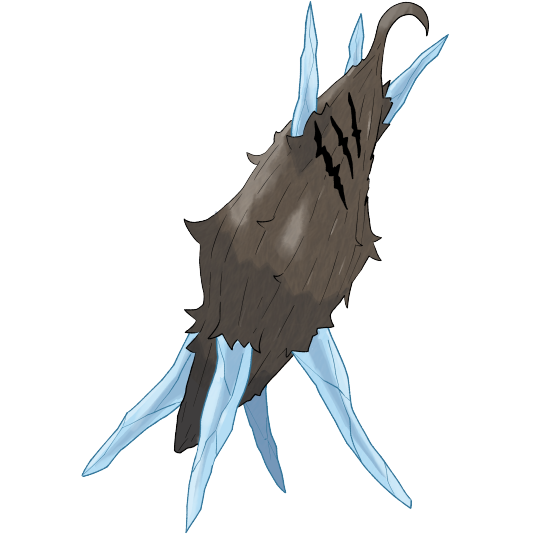
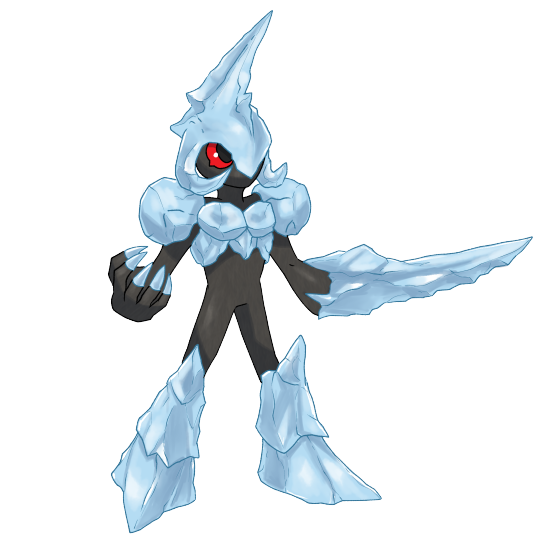
Once again I have more Zonnia Pokemon to show! This time it's Yeteze, Kerapod, and Frozaa, drawn by @PSantheran! My army of creatures continues to grow.
7 notes
·
View notes
Text
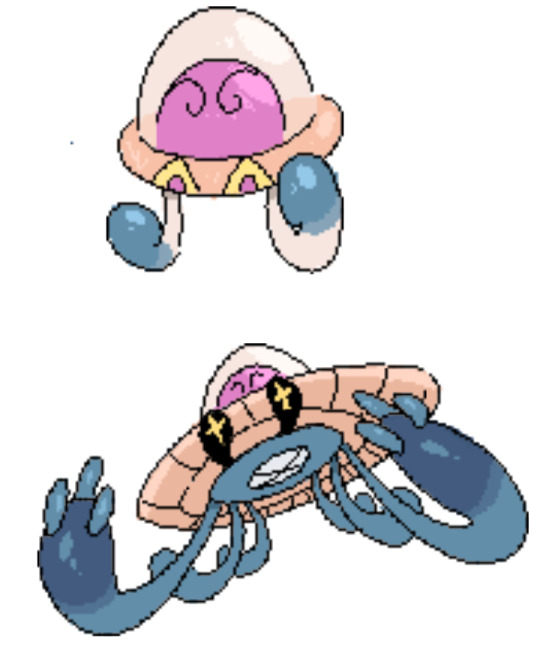
Yet more Zonnian Pokemon - this time it's Jellufo and Jellorbit, drawn by @DiaNibiru!
49 notes
·
View notes
Text
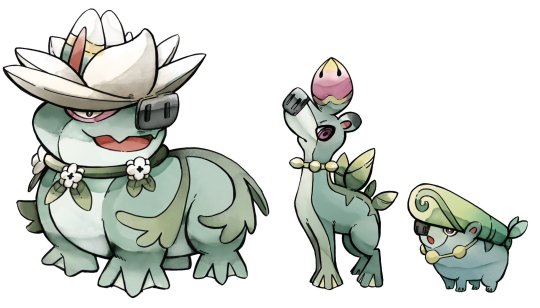
I am happy to continue sharing commission art of my Zonnia Pokemon!
This time we have the Water/Grass starter line, from right to left they are: Capyzen, Capyzenna, and Capygigas, illustrated excellently by KlareLovesHam!
16 notes
·
View notes
Text

Art time! This wonderful sprite of Tivottal, from the Zonnia Pokedex, was commissioned from @goliathgastropod! They're so good at sprites, please go commission them!
150 notes
·
View notes
Text
Zonnia Pokedex: Mega Beakaiser, Mega Gelogeist, and Mega Dij'igenesis
The third and final set of Mega Evolutions has been added to the Zonnia Pokedex, completing it! It is now done. You can use the source link on this post to find it on ao3. Thank you for reading.

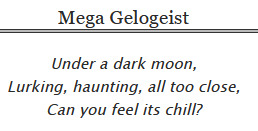

7 notes
·
View notes
Text
Zonnia Pokedex: Mega Tegutan, Mega Anchorus, and Mega Huacura
The second of my three Mgea Evolution chapters has now been published! You can find the link to them in the source of this post.
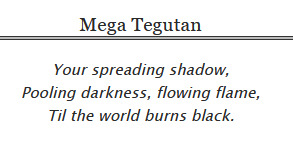


3 notes
·
View notes
Text
Zonnia Pokedex: Mega Capygigas, Mega Avarayth, and Mega Tempersuer
The first of my three Mgea Evolution chapters has now been published! You can find the link to them in the source of this post, as I believe linking directly still hides posts from tumblr's tags! Terrible website!
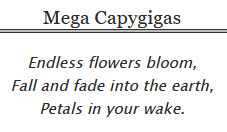

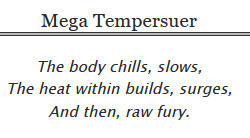
6 notes
·
View notes
Text
Update on this, we have an end date set! On the 20th of September, 2023, the votes for Zonnia Mega Evolutions will be locked in place and the most voted for Pokemon will receive Mega Evolutions!
Of course that still leaves time for folks to cast their own votes and affect the final tally, so if you’re interested please head along to Zonnia: A Fusion Pokedex on Ao3, check out my creatures, and cast your vote!
Zonnia Pokedex: Mega Evolution
I’m happy to announce the opening of the Mega Evolution poll for Zonnia!
By following the source link to AO3, you will find details of how to nominate up to six Zonnian Pokemon to receive Mega Evolutions! Once the poll closes, the top six most nominated will gain these new forms!
If you can and are interested, please head along to Zonnia and cast your vote!
14 notes
·
View notes
Text
Zonnia Pokedex: Mega Evolution
I’m happy to announce the opening of the Mega Evolution poll for Zonnia!
By following the source link to AO3, you will find details of how to nominate up to six Zonnian Pokemon to receive Mega Evolutions! Once the poll closes, the top six most nominated will gain these new forms!
If you can and are interested, please head along to Zonnia and cast your vote!
14 notes
·
View notes
Text
Zonnia Pokedex: Mega Evolution
I’m happy to announce the opening of the Mega Evolution poll for Zonnia!
By following the source link to AO3, you will find details of how to nominate up to six Zonnian Pokemon to receive Mega Evolutions! Once the poll closes, the top six most nominated will gain these new forms!
If you can and are interested, please head along to Zonnia and cast your vote!
14 notes
·
View notes
Text
Zonnia Pokedex: Zorukumat
Zorukumat
Incarnated Pokemon
Fairy / Dragon
Lugia + Volcanion
Appearance
Zorukumat is a titanic flying serpent Pokemon, whose body length exceeds forty feet with proportions similar to those of Aabysra. The Pokemon's body consists of seven large building-like pieces of stone, each shaped as though they were rectangular but are presently bulging outwards in a rounder shape due to internal pressure. Each individual stone piece is distinct, and has some additional outcroppings emerging from the main chunk. Darker brown stone occurs in spots on the top of each piece, with lighter brown making up the rest of it.
Emerging from the rear of each stone piece is a massive volume of pale blue-white feathers, which creates an obscuring screen around the gap between one stone piece to the next. Tracing over each stone piece are lines and circles of golden metal, which connect together and extend from one piece to the next, through the feathers, to keep all connected together. The stone pieces of Zorukumat grow smaller towards the end of its body, and from the final cylinder-like piece of stone emerges a mass of curved feathers that create the appearance of a fluffy tail.
From the front of the largest stone piece, which occurs at the front of Zorukumat's body, a massive wall of feathers emerge, ranging in colour from white to pale-blue, stretching out and back to create an obscuring collar that is triple the diameter of the largest stone piece. This wall of feathers adjusts in flatness, going from a completely flat surface when viewed head on to a pointed shape analogous to a serpent's head.
Viewable within this mass of feathers are two diamond-shaped eyes, with black edges that are slightly rounded. The interior of each eye is pale yellow, with a black circular iris surrounded by two concentric black rings. These eyes are not physical, but instead consistent points of light.
At all times Zorukumat emits a faint golden glow, but when actively using its power this glow becomes extremely radiant.
Follow the source link to AO3 to read the Ecology, Field Reports(!), and Design Notes of Zorukumat, the 150th and final Pokemon of the Zonnia Pokedex!
2 notes
·
View notes
Text
Zonnia Pokedex: Blistern, Gysull, and Beakaiser
Blistern
Hot-bodied Pokemon
Fire / Water
Charmander + Piplup
Appearance
Blistern are water-bird Pokemon, one and a half feet tall, with uranian blue plumage and a salmon pink underbelly. These Pokemon have an orange beak and two orange webbed feet, and three dark blue feathers making up their tail. A swoop of the same dark blue feathers curves over the top of the head and up, like a wave.
Blistern's eyes are round, dark red-black with white highlights, one on either side of the Pokemon's head. Just beneath each eye a curled feather emerges and points backwards, loosely resembling a moustache. These feathers are the same dark blue as the head swoop and tail.
The chest of Blistern ranges in temperature from warm to scaldingly hot. Aside from a potential heat haze around the chest, the only way to identify the Pokemon's current temperature is by its current temperament.
Ecology
Blistern appear scattered along the western coast of the Zonnia Region, however their most concentrated number can be found within Lake Quliqusi, headwater of the Loma River found within the Kuntunka Range. In every location the Pokemon is primarily piscivorous, feeding on small fish which they dive into the water to catch.
Heat builds within the body of Blistern, which allows them to weaponise steam and scalding water in addition to regular water for attacks. However Blistern are not yet fully suited to managing these high internal temperatures, and so spend a majority of their time in cold water to balance it out. The Pokemon are exceptional swimmers and divers, and can spend extensive lengths of time underwater without concern. Their walking and flying capabilities are weak however, and while they can do both, they are slow and awkward to do so.
As the heat rises within Blistern, the Pokemon become more temperamental and territorial, rejecting the presence of others local to them. The Pokemon live in loosely grouped colonies, such that they can group up or spread apart as a response to their overall temperature. During significant cold periods, the Pokemon may eschew water almost entirely, remaining on land and letting their body heat remain high. An on-land Blistern is almost certainly liable to be somewhat cranky, and so care in approach should be handled.
While the direct evolution of Blistern, Gysull, tend to be loners who range afar, the final evolution of this Pokemon line, Beakaiser, can normally be found nearby to individual Blistern colonies, further demanding care in approaching the Pokemon. It is because their final evolution is so protective of them that Blistern are a rare Pokemon to obtain outside of the regular channels for acquiring a Starter Pokemon.
Field Report
Per public records from the Zonnia Pokemon Foundation, the intention to nominate three Zonnian Pokemon that fit the Starter Pokemon structure quickly settled on Capyzen and, taking its typing into account, then looked to Anoil and Blistern, attempting to identify whether said Pokemon lines could potentially meet the conditions of a Starter Pokemon. After research concluded, breeding programs were either established - in the case of the Capyzen of Pazrosa Gardens - or connected to - as with the Anoil of the Cendio Tepui, and the Blistern of Lake Quliqusi.
While Blistern can be found scattered along Zonnia's rocky western coast, the guarding presence of their final evolution makes capture risky for all but the most experienced trainers. By contrast however, the population of Blistern native to Lake Quliqusi have a long-standing relationship with the residents of Laphi Village, a series of connected floating islands on the lake itself with housing built atop. Blistern often use these islands as rest points, sleep atop roofs during cold nights - doubling to provide warming from above for the people within - and in general are far more socialised with humans. And while Beakaiser can be found around Lake Quliqusi as well, they do not possess the same wariness thanks to this long history of cohabitation with others.
As such, any Blistern presented as a Starter Pokemon to another is most assuredly from Laphi Village, being a Pokemon very relaxed around people. Much like with Capyzen and Anoil, Blistern will gain strength and wildness with evolution, challenging new trainers to rise to the occasion of caring for their new partner. Of the three Starter Pokemon, Blistern boasts the highest temper due to its rising internal body heat, and requires regular bathing as part of care. When cared for appropriately however, they are affectionate and capable Pokemon, who will walk alongside many neophyte Trainers of the Zonnia Region on the path to maturity.
Follow the source link to AO3 to learn about the evolutions of Blistern: Gysull and Beakaiser!
2 notes
·
View notes
Photo
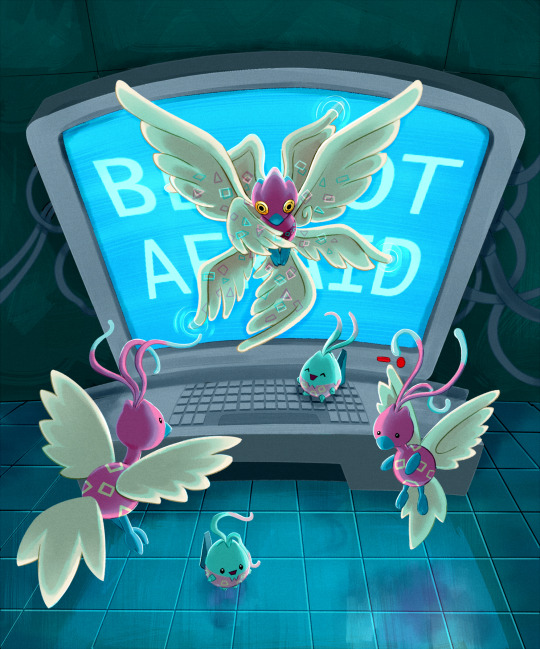

Great friend and artist @flyeatspeople realised two of my Zonnia Pokemon lines in amazing detail!
The first image shows Dij’i, Dij’igen, and Dij’igenesis, while the second is of Pillarva, Gravibee, and Cherumera!
72 notes
·
View notes
Text
Zonnia Pokedex: Dantdant and Moundeer
Dantdant
Mountain Deer Pokemon
Normal
Hoothoot + Buneary
Appearance
Dandant are quadrupedal mammal Pokemon, standing three and a half feet in total height from foot to head, with a remaining variable foot of length encompassed by their antlers. Covered in a coat of warm brown fur, Dantdant have a layer of cream-coloured fur that extends down their throats and along their underbellies, which grows and sheds at a faster rate than the remainder of their fur. At their rear is a small tail that hangs downwards and curls up, while on the end of each foot is a two-toed black hoof.
The head of Dantdant is more angular than rounded, ending in a dark nose. The Pokemon have two eyes, with black irises and a bright orange-red trio of stripes beneath each. The ears of Dantdant point slightly upwards but mostly horizontally, with darker interiors.
Dantdant have a pair of sizable antlers, which consistently split into two prongs at the end of each, for a total of three cycles of splits. That is: each antler of Dantdant emerges from their head, pointing upwards and out at an angle, then splits into two, those two split into two each, and then those splits divide one final time. This means that each antler ends in a total of eight distinct points, for sixteen total points when considering both starting antlers. The antlers are dark brown, similar to the hooves in colour, however the ending tips are lighter cream coloured.
The total number of segments that make up each antler is fifteen. Dantdant are capable of moving each individual segment within a limited range of movement, that allows for a very large number of notably different shapes in their antlers to result. This adjustment is for purposes of communication and maintaining of balance in the precarious environments the Pokemon inhabit.
Ecology
Residents of the peaks of Zonnia's mountains, Dantdant boast unsurpassed manoeuvrability in unstable environments, being able to maintain their footing on essentially sheer surfaces and move along those surfaces at high speeds. This Pokemon achieves this by altering the alignment of their antlers, redistributing weight along them and counterbalancing the weight of their own body, allowing for improved balance at almost any angle. Combined with hooves that excel in gripping even on loose and crumbling stone, Dantdant move across the heights of Zonnia without fault or fear.
Though herbivorous, Dantdant are highly territorial, and actively seek to drive off intruders by charging at them at full speed. To recall that a Dantdant is most commonly encountered in environments where footing is unsteady and the most stable surface is a sheer cliff-face to the side, seeing the Pokemon running alongside that cliff-face directly at you is an... off-putting experience. For the mountaineers of Zonnia, ways to deal with an infuriated Dantdant (the most common state to find them in) is a recurring subject.
Dantdant primarily attack with powerful tackles and charges, and much less their antlers. Providing there's adequate food they will not fight amongst their own species, however do engage a measure of competition with one another during mating season. Displays between two male Dantdant are performed via movement of the antlers, creating differing shapes and patterns to it. The specifics of this communicatory language are unknown, however even outside of mating season Dantdant use their antlers to send visual signals to one another at a distance. Thus the Pokemon also have strong eyesight.
Field Report
Evolution of Dantdant is primarily driven by mental state, and secondly by physical growth. The interesting part of this is that there are two extremes that can cause Dantdant to evolve - one of happiness and one of frustration. A Dantdant that has had to fight off intruders, opponents, and struggles for a period of time may evolve. And one that has lived in abundance and relaxation may evolve. For Pokemon Trainers, a Dantdant that has been treated with affection and care will reflect that in its evolution. A Dantdant that is neglected will evolve too, however the result will not be healthy for the Pokemon or its Trainer.
The extremes of Dantdant's emotional state that allow evolution reflect its emotional volatility - the Pokemon easily shifts its feelings and does so to high degrees. A Dantdant given reason to be happy will be as happy as can be. A Dantdant that is sad will be more morose than one can believe possible. When the Pokemon feels a specific emotion, it feels it so strongly as to be consumed by it. And at passive rest the antlers of Dantdant will shift to reflect its feelings, changing base shape over time. While the more complicated shape variations used for intra-species communication are not fully understood, the generalised emotional shapes of their antlers have been well-catalogued.
As a long-standing Zonnian Pokemon, Dantdant has a collection of cultural tales to its name. More than a few stories dedicated to warnings about intruding upon the Pokemon's territory in the mountains. Some covering their emotional volatility, and the radiant joy they can express. And, as a result of understanding the general shapes of specific emotions that Dantdant make with their antlers, those shapes have become symbols of those emotions in Zonnian designs. After looking at a collection of Dantdant antler patterns, one may begin to see those patterns in media intending to evoke those emotions.
Per Diana's words this is “cursed knowledge” and “makes it impossible to be normal when consuming Zonnian media for the rest of my life”. Please take this into account before continuing study of this Pokemon.
Follow the source link to AO3 to learn about the evolution of Dantdant: Moundeer!
1 note
·
View note
Text
Zonnia Pokedex: Guineium, Sparkavi, and Caviator
Guineium
Static Charge Pokemon
Normal
Elekid + Starly
Appearance
Guineium are small rodent Pokemon, round-bodied but slightly longer than wide, measuring a foot in total length. These Pokemon have fur pelts of white and gold in a mixed pattern, with more gold on the upper half of the body and more white on the lower. The borders between these colours occur as curving lines, which creates a soft wave pattern where they meet.
Entirely quadrupedal, while Guineium have short legs they are quick runners, and weave in zigzag patterns as they move. The mouth of Guineium boasts two pairs of sharp incisor teeth, which are used for chewing a wide variety of plant matter, the species being entirely herbivorous. On each cheek is a round bright yellow circle, and above each a round black eye. From the top of their heads emerge large, rounded, gold-furred ears.
An electrical charge builds around Guineium as it moves, which produces a loud and unique chirping sound.
Ecology
While Guineium is a Pokemon that can appear throughout the Zonnia Region, thanks to the capabilities of its final evolution, the species numbers most commonly within the Pamra Plains, their massive population there straying over into the Waqa Grasslands to the north. Highly social, this Pokemon congregates in large herds for purposes of both mental stability and physical safety.
Although Guineium build up electrical charge simply by running about, said charge is only strong enough to mildly shock on contact, and cannot be weaponised with any Electric-type techniques. That being said, when large numbers of Guineium move together, their electrical charge mixes and intensifies, creating a field surrounding a running group that is far more capable of turning back predatory threats.
As such, in the wild, Guineium stay close together, and when prompted to run will do so in a line, one after the other, zigzagging in the same direction as electrical charge builds between them all. By running amongst tall grasses repeatedly, Guineium create paths through the fields of Pamra and Waqa, paths which are difficult to see from above, yet provide clear space for running at high speed.
Despite these strategies however, Guineium are ultimately a primary prey species to many of the predators of the Pamra and Waqa areas, and the wider Zonnia Region as a whole. This Pokemon species reproduces quickly and in large litters, which allows it to continue on while serving as one of the bases for their local food-webs.
With the passage of time, maintaining of health, and occasional clashes with other Pokemon, Guineium will evolve into Sparkavi.
Field Report
Consistently considered one of the Zonnia Region's cutest native Pokemon, Guineium entertain great popularity both locally and abroad, and are one of the signature Pokemon of the region. Excellent for advertising most any Zonnia product due to its association with the region, Guineium can be found represented in countless ways that have little to do with the Pokemon itself, from “white and gold” brand cleaning products to branded paragliders.
Most common to Zonnia but occurring in other regions as well, Guineium are a common first or pet Pokemon for families and young, being a species with weak combat power alone and a social need that can be fulfilled by human care and attention. Many young children will ask their parents for a Guineium to raise, and many families with no interest in battling will keep a Guineium as a family Pokemon.
Aside from regular social contact, the primary care requirement for a Guineium is to provide regular chewable food for the Pokemon to wear down its constantly growing incisor teeth. Guineium will get along with almost any other species of Pokemon if introduced with appropriate care, and providing the Pokemon does not spend any length of time panic-running about, they will not generate a shocking electrical charge within their fur.
When properly socialised, Guineium are relaxed, friendly, and overall pleasant, and are a beloved family species for many people the world over.
Follow the source link to AO3 to learn about the evolutions of Guineium: Sparkavi and Caviator!
1 note
·
View note
Text
Zonnia Pokedex: Xerowl and Athenode
Xerowl
Stonebound Pokemon
Rock
Darumaka + Vullaby
Appearance
Xerowl are stone-bodied Pokemon, two-feet tall with a bird-like appearance. The outside stone layer of this Pokemon is not capable of discrete movement, with its entire body remaining in the same shape at all times. Xerowl move by hopping, the force that causes them to jump occurring within their body and lifting their stone shape from the ground before they land again. The rounded shape of Xerowl's base makes it exceptionally hard to knock over, meaning the Pokemon almost always returns to a standing balance after leaping. If Xerowl are knocked over, the hopping force they generate within their body can still lift them upwards, giving them the opportunity to rebalance.
Xerowl have flat sides and a rounded base, their stone bodies teal blue in colour. The shape of wings pressed against their body can be found on either side. The feet are detailed on the base but not distinct from it, neatly pressed together side-by-side. A small tail exists made up of rock protrusions resembling feathers. Similarly a tuft of small protrusions in the centre of the upper chest give a feathered-chest impression.
The head of Xerowl is more square than its rounded base. The Pokemon have large round eyes with black circles in the centre, and a series of lines along the face creating the shape of a pointed beak, although this shape does not actually extend outwards from their flat faces. On either side of the head a triangular upwards pointing shape resembles horns or ears.
Ecology
Due to their lacking mobility, Xerowl are rarely found far from the nest in which they were born. These Pokemon are conscious and alive, but of the class of Pokemon that do not experience natural biological growth. Xerowl hatch from eggs at a single size, and remain that size until evolution - an evolution driven by active conflict and sustained damage to their body to the point that they begin to crack open and release the animating spirit within them.
Reproduction within the species that creates more Xerowl is handled entirely by evolved form Athenode: a pair of which partition a piece of their own essence and combine it within a nest of dust and stone, creating an egg that will soon hatch into Xerowl as a result. Direct testimony indicates the evolved form as the originator of this species, with Athenode created first and then reproducing to create new Xerowl.
In spite of their confined appearance, Xerowl are an extremely active species, constantly on the move and hampered only by their inability to do more than make a singular hop at a time. Curious and boisterous, with a strong body, Xerowl will throw themselves at whatever they encounter, the feedback of taking hits from Pokemon that treat them as attackers as welcome as any other experience. Given that evolution requires Xerowl's body to sustain a significant amount of damage, the Pokemon's personality is primed specifically to gain this result, as the Pokemon will giddily throw itself at anything that moves.
As Athenode have spread across the Zonnia Region, Xerowl can appear anywhere, but tend to prefer drier environments. The species being one of the Zonnia Region's newest, only spreading in the wake of the Zonnia Disaster, means the capabilities of this Pokemon and its evolution are still being studied, but numerous Trainers have taken the Pokemon on and reported an enjoyment of its raw zest for life.
Field Report
Field Report for Xerowl submitted by Diana Marinero.
It started to rain as the Professor and I made our way into the Yuracha Thornlands, atop the back of the Katarain that had been watching over me. Amblefin poked their heads out of the ground to look at us, Cactinga turned to watch as we passed them by, and as Katarain leaped from raindrop to raindrop through the sky, Voltrail rose up and flew at our side.
The Yuracha Thornlands are filled with Pokemon dedicated to turning intruders back, and yet despite all of them seeing us so clearly not a one complained. It seems that atop a Katarain there is nowhere in the region one cannot go. Given that Olivera had a Katarain partner herself, a lot of the mysteries about who could have gotten to Ruku Pata prior to Team Midas have filled themselves in.
When we closed in upon Ruku Pata is when we saw Athenode for the first time, a whole flock of them nesting on the rooftops of the city. All shadowy ghostly wings spread out as they looked down upon us. The first clutches of Xerowl were just hatching, with a lot of the Athenode still nesting atop collections of eggs on the roof. Down on ground level some Xerowl that had already fallen off buildings - all fine thanks to their stone bodies - were hopping around excited at something new having arrived. The Professor caught one, who we've named Pins cause it reminded us of a bowling pin. Still unevolved presently, so just a local menace around the new lab since it loves running full force at whatever it sees moving and it's a two foot tall mass of rock. I need to buy some shin-guards.
The city was way less quiet than you'd expect a site abandoned for centuries to be. There were Deenay all over the place - this is where I caught Ribbon - and the two Huacura Lex theorised were heading to Ruku Pata had made it here. Usually that Pokemon has a pretty dour expression, but those two were so clearly thrilled to be out in the rain that I couldn't help but smile at the sight of them. We'll get more into what they were up to here later.
At the steps to the centre of the city was Carlo, Master Ball visible at his hip. After the initial round of grievances, he started to fill us in on what happened here. When he first arrived in Ruku Pata, a whole bunch of stone statues came alive and tried to attack him. No idea how Team Midas dodged that happening, going to have to continue diving into their records to try and figure that out. Anyway since Carlo had Aabysra it didn't matter what disliked him, nothing could do anything about it. Aabysra trashed the defences, and that's where things got weird.
According to Carlo the statues had an animating spirit within them, kind of like proto-Pokemon - artificial beings but more tool than living creature - the last line of Ruku Pata's defence. But somehow once the statues were cracked open, and exposed to Aabysra's aura, they suddenly transformed into what we're calling Athenode. So that's two lines of Pokemon Carlo accidentally created while wandering around here. Further proof that coming to Ruku Pata is an act of idiots - and you can hold me to that standard too.
Anyway soon after the Athenode came to life they had spread about and started nesting, producing Xerowl. Whatever programming was in the statues that said to drive off intruders, that was clearly wiped out by the transfiguration into an actual Pokemon, because the Athenode did not care at all that we were there.
Ultimately the reason we were in Ruku Pata had nothing to do with the Xerowl and Athenode, so we acknowledged them but left actual study for later. Xerowl can't go very far on their own but Athenode can, and nests of the Pokemon have since started popping up all around Zonnia.
If we're lucky, here on the other side of the Zonnia Disaster, we've seen the end of Pokemon created from the remnants of the Kani people. I really hope we're lucky.
Follow the source link to AO3 to learn about the evolution of Xerowl: Athenode!
1 note
·
View note
Text
Zonnia Pokedex: Larvader, Grisalis, and Scornery
Larvader
Tripwire Pokemon
Bug / Poison
Wurmple + Venipede
Appearance
Larvader are cylindrical insect Pokemon, grub-like and measuring a foot and a half in length. Plates of glossy dark red carapace run along this Pokemon's back, stretching forward over the top of the head like a horn, and reaching all the way to the tip of its tail, where it forms two smaller spikes. When Larvader curl up, the underside of their body's front and back halves press together, creating a thick covering of carapace with little access to the softer inner body.
Aside from the red carapace, Larvader's body is purple, and rough to the touch but not particularly tough. The underside of the Pokemon is cream-coloured, though it's often difficult to see this. More visible are the two cream-coloured circles that appear on the Pokemon's sides - one on each. These circles are hollow, with the regular purple colouring within them.
Larvader have a collection of small feet along the length of their body, ten in full total. These feet are simple black curved points, and are used more for gripping to surfaces than moving with speed. The head of Larvader consists of two dark yellow eyes, with circular black irises, and a slightly pointed beak-like shape to their mouth. Inside the mouth is a pair of fangs, emerging from the upper lip and pointing downwards.
Ecology
Larvader are another species primarily located within the Zonnia Basin, with the Pokemon embracing the uncommon role of a Bug-type with a low reproduction and high survival rate. Larvader are born singularly, often with no more than one from a mated pair of Scornery per year. And while the survival rate for this Pokemon itself is middling, once it achieves its first evolution a long life is almost entirely guaranteed.
Slow to move by traditional means, Larvader navigate dense underbrush and bury themselves in fallen foliage, before shooting out a thin strand of thread from their mouths to attach to a nearby tree or rock. This thread then serves as a tripwire - any other creature making contact with it alerting Larvader to potential prey.
When Larvader does sense contact with its thread, it immediately shoots out a much thicker mass along the same angle, aiming to strike whatsoever touched its thread. On connection, Larvader will then reel in the thread, causing either the target to be pulled to it or, more often, it to be pulled towards its target.
Curling up, so that its armour plating almost entirely protects it, Larvader will bite down upon prey as soon as it is within reach, releasing a paralytic venom from its fangs. This venom is slow-acting, requiring continuous injection for a proportional period of time to the target's prey, but thanks to its armour protecting it Larvader are not easily motivated to release their bite and give up.
Once its prey is fully paralysed, Larvader will use its sticky thread to wrap and bind them, slowly dragging them to a nearby storehouse of all collected prey. Once it has enough, Larvader will cocoon itself surrounded by its tightly bound prey and begin the process of evolution into Grisalis.
Field Report
While Larvader's hunting mechanism can be intimidating, it is its hard armour that grants the species long-term survival prospects far more than its actual predatory nature. Larvader don't discriminate in going on the assault once their tripwire is triggered, leading to the Pokemon often attempting to bite down on a Tempersuer or Ribbishine - both of which being species more than willing to consume an errant Larvader - as much as a Khorusect or Gracehopper - which are far more the regular prey a Larvader is interested in.
The Pokemon's slow movements similarly make it easy to steal prey from for larger species, with Impecki quick to raid a Larvader's hoard if given the opportunity. As for personal defence, in the case that one is wandering the Zonnia Basin without the protection of Pokemon that could easily drive off a Larvader - not recommended - it takes time for the paralytic agent to be effective against humans and one has more than enough time to grasp a wieldable rock or branch and stun the Pokemon by banging against the top of its carapace head. While it should be treated after the fact, thanks to its paralytic agent Larvader's bite does not hurt in the moment.
The Zonnia Region boasts numerous Bug-type Pokemon, allowing for specialists of such to thrive. The final evolution of Larvader, Scornery, is a high-speed Pokemon able to compete with other members of Zonnia's fastest such as Dij'igenesis, Furnacede, and Erupture, thus motivating Trainers to raise it. Larvader raised by Trainers should be given the same opportunities as those in the wild to build storehouses of trussed up food - it is just that the food does not need to be captured alive for this Pokemon as it is in the wild.
Follow the source link to AO3 to learn about the evolutions of Larvader: Grisalis and Scornery!
2 notes
·
View notes